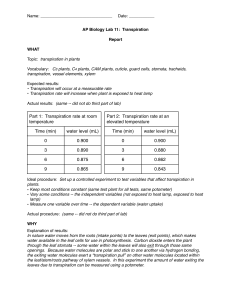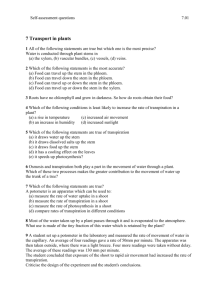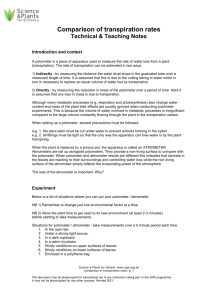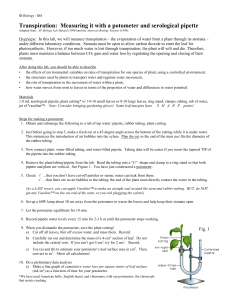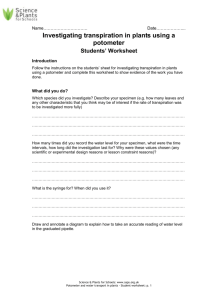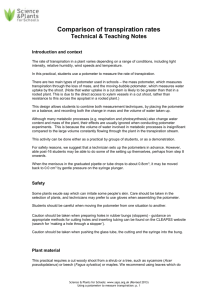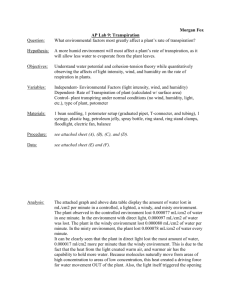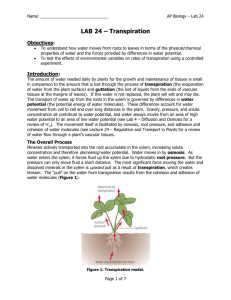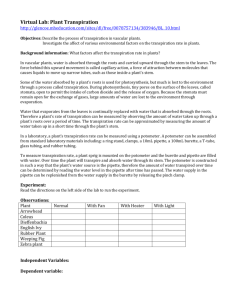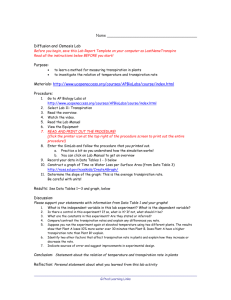Using a potometer to measure transpiration
advertisement
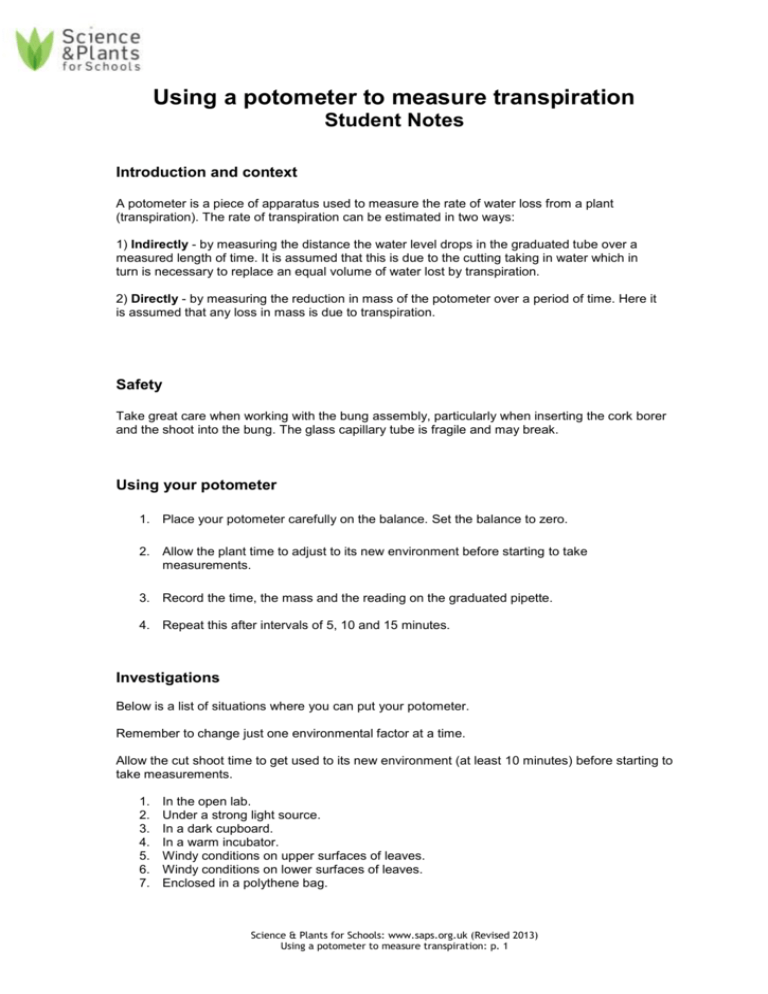
Using a potometer to measure transpiration Student Notes Introduction and context A potometer is a piece of apparatus used to measure the rate of water loss from a plant (transpiration). The rate of transpiration can be estimated in two ways: 1) Indirectly - by measuring the distance the water level drops in the graduated tube over a measured length of time. It is assumed that this is due to the cutting taking in water which in turn is necessary to replace an equal volume of water lost by transpiration. 2) Directly - by measuring the reduction in mass of the potometer over a period of time. Here it is assumed that any loss in mass is due to transpiration. Safety Take great care when working with the bung assembly, particularly when inserting the cork borer and the shoot into the bung. The glass capillary tube is fragile and may break. Using your potometer 1. Place your potometer carefully on the balance. Set the balance to zero. 2. Allow the plant time to adjust to its new environment before starting to take measurements. 3. Record the time, the mass and the reading on the graduated pipette. 4. Repeat this after intervals of 5, 10 and 15 minutes. Investigations Below is a list of situations where you can put your potometer. Remember to change just one environmental factor at a time. Allow the cut shoot time to get used to its new environment (at least 10 minutes) before starting to take measurements. 1. 2. 3. 4. 5. 6. 7. In the open lab. Under a strong light source. In a dark cupboard. In a warm incubator. Windy conditions on upper surfaces of leaves. Windy conditions on lower surfaces of leaves. Enclosed in a polythene bag. Science & Plants for Schools: www.saps.org.uk (Revised 2013) Using a potometer to measure transpiration: p. 1 Results These can be recorded in a table as below: Time Volume taken up (cm3) Mass lost (g) Conclusions What conclusions about the factors affecting the rate of transpiration can you draw from your results? Questions 1. What is a potometer? 2. What biological process produces water and also decreases mass of a plant? 3. What biological process uses water as a raw material and also increases the mass of a plant? 4. Why are the effects of these processes usually ignored when taking potometer measurements? 5. What factors affect transpiration rate? 6. What precautions must be followed when setting up a potometer? 7. If you were comparing transpiration rates of several leaves, what leaf feature should be measured to obtain a fair comparison? 8. What steps were taken while carrying out the experiment to ensure that results were both valid and reliable? Science & Plants for Schools: www.saps.org.uk (Revised 2013) Using a potometer to measure transpiration: p. 2

